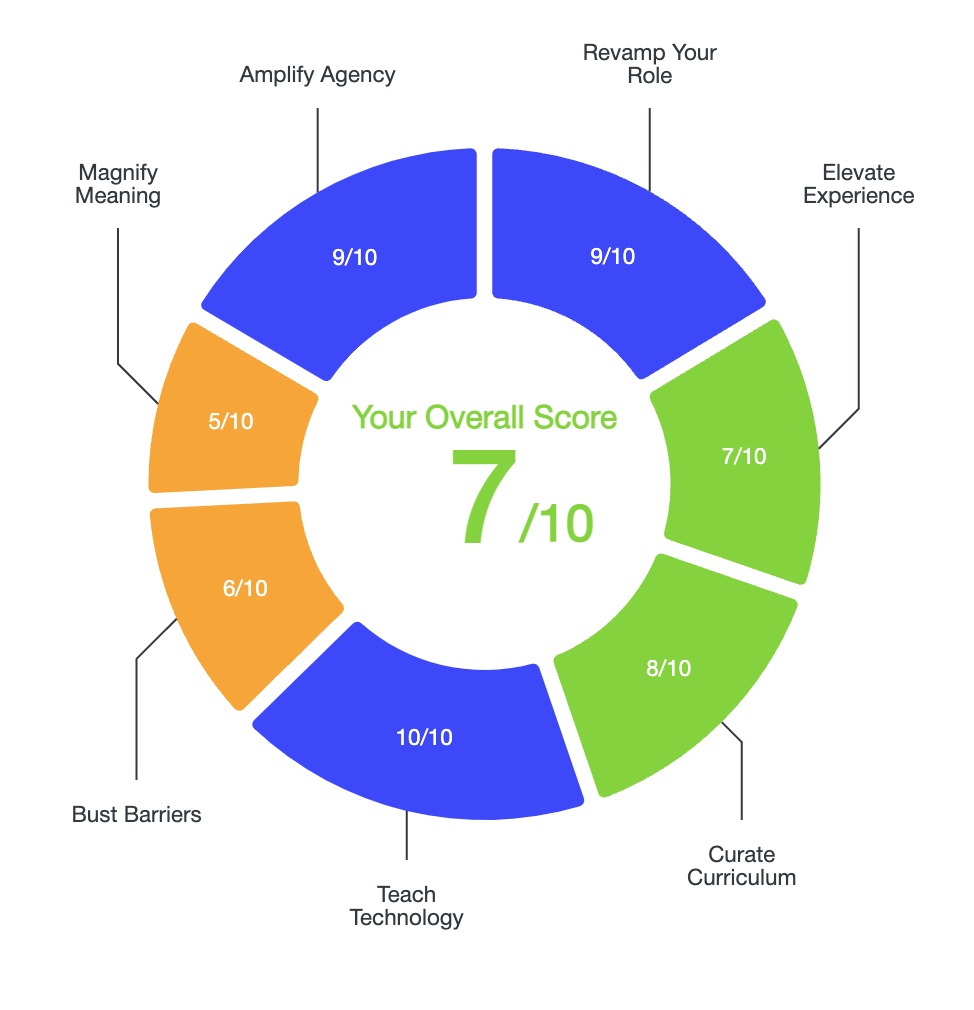Starting a student podcast is an excellent way to use education technology to promote different voices in the classroom. See the video tutorial below to learn how to do it, and read below for more detailed information, as well as resources and a lesson plan.
Why Podcast with Students?
Shortly after deciding to start my own podcast, it seemed like a logical next step to try it out with my students. Although I’ve experimented with a variety of other ways of having students create digital material, I never really felt confident introducing audio recording and music making, and wasn’t sure how it could fit. Now that I’ve started, I’ve quickly realized why using an audio creation platform like Soundtrap to podcast with students should be an essential addition to any classroom. Here’s why:
1. The Speaking and Listening Standards:
We know we’re supposed to teach kids how to speak and listen, and we know from Jeff Zwiers that academic conversations are a fundamental part of developing strong critical thinking skills. Still, it’s challenging to develop meaningful, engaging activities that encourage students to speak and listen to each other. Student podcasting doesn’t replace structured group or partner discussions, but it’s a highly useful platform for actively teaching and practicing the speaking and listening standards.
2. Amplify Student Voices:
One of the most challenging aspects of trying to promote listening and speaking skills amongst students is the fact that not all students share the same level of comfort speaking in front of the whole class or in groups. Podcasting allows all students the opportunity to share their thoughts, insights, and knowledge and gives everyone in class the opportunity to speak and be heard.

3. Engagement:
Once teachers learn how to audio record with students, it becomes another trick up a teacher’s sleeve to engage students and to capture their interest.

4. Community Building:
Podcasting is unique in that it encourages long-form audio recording that is then shared and listened to by others. Podcasting gives students the opportunity to tell their stories, and to discuss topics and issues that are important to them. Hearing each other helps students understand each other.

5. Expose Students to New Forms of Digital Creation:
Using Soundtrap to create a student podcast introduces students to software that could help them discover interests and/or talents in media production, journalism, broadcasting, etc.

Getting Started
Use this graphic organizer w/hyperlinks as an initial lesson to begin podcasting with students.
1. Activate Prior Knowledge:
Ask students what they already know about podcasting and have them share their ideas.

2. Pitch It To Students!
Talk up how cool and innovative podcasting is. Have them login to npr.com to listen to a few snippets of podcasts.

Have students search on Google “What is a podcast” to add to their understanding.

Come back together as a class and create a whole group definition that answers: “What is a podcast?”
Another important piece of selling the idea is doing a live demo of the software. Show them how easy Soundtrap is to use. You’ll really catch their attention by showing them how easy it is to drop in a musical loop.
3. Figure Out Your Equipment:
When creating a podcast with Soundtrap, students only need headphones and a computer, tablet, or smartphone to allow them to access the website or the app.

If you want to go all-in, the next step would be to get external microphones like the Blue Snowball and to create DIY soundproof “studios.” I’m using these for my podcasting club, but they are by no means necessary, and not having them shouldn’t be considered a barrier to getting started.

4. Teach Students the Basics
Prior to rolling out Soundtrap, I highly recommend either creating your own video tutorial for how to use the software, or showing them someone else’s tutorial (like mine!).

Make sure students understand the following functions in Soundtrap:
- Add a collaborator if working with a partner or group
- Create an audio track
- Add a musical loop
- Drag tracks to extend or shorten their length
- Fade in and out a musical loop
- Split clips and delete
- Use transcribe tracks to directly edit audio
See my video tutorial for step-by-step instructions for each of these functions.
5. Give Students Tinker Time
Lastly, allow students some tinker time with the studio before actually giving them an assignment. This will help them get comfortable with creating audio in the Soundtrap studio, and build excitement about using it.

Family Interview Lesson Plan
For our first podcast I had students record a family interview. Here are links to the lesson plan, as well as the graphic organizer with hyperlinks I used with my students.
1. What Makes a Good Interview?
Before planning their family interview, spend some time analyzing what makes a good interview and having them record their thoughts in a graphic organizer.
I directed students to StoryCorps to see examples of family interviews, and then had them read a short article on NPR about what makes a good interview.

2. Planning Interviews
Next, students started to plan their interviews. They thought about:
- Who they would like to interview
- What they already know about that person
- What they would like to learn about that person
Then, they logged into this site to see some examples of questions they could ask their relative in order to learn more about them.
Lastly, they prepared their questions and planned for a time to call their family member or to interview them in person.

3. Recording Interviews:
First, I had students transfer their interview into a final draft document so they could edit and revise it before publication.
Then, students logged into Soundtrap through Google Classroom and started to record their podcasts.

4. Listening and Responding
After students recorded and uploaded their podcasts to Google Classroom, they listened to each other’s recordings and responded using “Connect” and/or “Clarify” sentence starters. These conversations can happen face-to-face, or via online commenting on Google Classroom.

Tips and Tricks
- Demo Soundtrap live to increase buy-in.
- Give students tinker time to play around in the studio and see what it can do.
- Have students their record audio track before their music track (otherwise they might spend the entire time editing their music).
- Create a video tutorial showing them how to use Soundtrap, or use mine!
- Create an assignment and upload it directly to Google Classroom for easy organization.
Resources
- Google Slides - How to setup a Podcast
- Generic Podcasting Planning Document
- Michael Hernandez’s Podcasting E-Book
- Family Interview Lesson Plan
- Intro to Podcasting/Family Interview Graphic Organizer
- “Starting Your Own Podcast: A Guide for Students” - NPR
- “Teaching Podcasting: A Curriculum Guide for Teachers” -NPR
- Soundtrap Edu Blog: Ideas for integrating podcasting across subjects
- Equipment for Podcasting - Suggestions for gear upgrades from Cult of Pedagogy
- How to make a DIY soundproof box
Conclusion
Podcasting with students helps them practice speaking and listening skills, amplifies student voices, increases engagement, builds community, and exposes students to new forms of digital creation.
For additional strategies for increasing autonomy, creativity, engagement, and academic rigor with technology, click here:
How to Use Education Technology: The Ultimate Guide
And to read more about why I believe technology must be a central part of public education today, click here:



